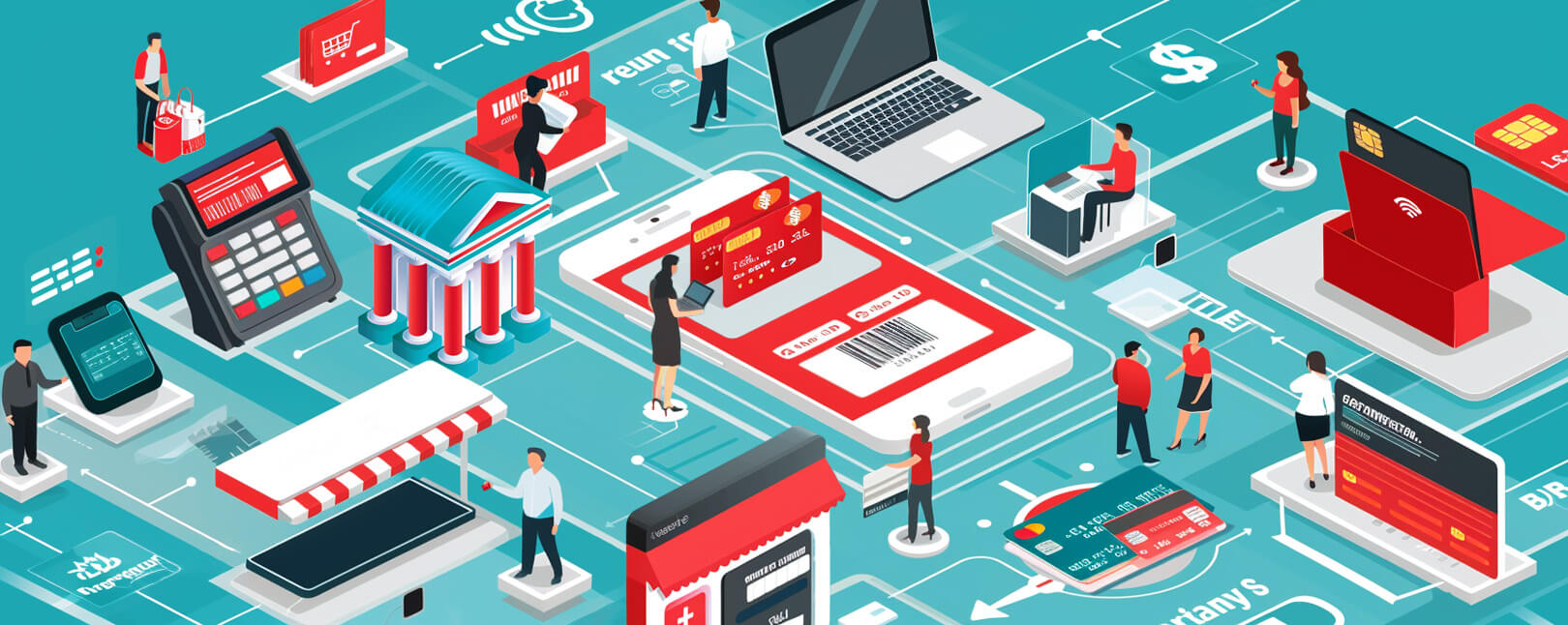8 Steps to Navigating the Chargeback Scheme
The chargeback scheme was devised by—and for—the payments industry. If you’ve been a merchant long enough, you’re probably at least somewhat familiar with it.
Generally speaking, governments provide an outline of the process for card networks to follow. Those networks are then free to draft policies concerning their brand. Here in the US, the Uniform Commercial Code provides this guidance. So, while the chargeback scheme varies between brands, there are some basic steps that every chargeback must follow.
This article will discuss what a chargeback scheme is, the eight steps involved in the process, and how it can be improved for everyone’s benefit.
Recommended reading
- A Step-By-Step Guide to the Chargeback Process in 2024
- Provisional Credits: Here’s Everything You Need to Know.
- Here are the 5 Valid Reasons to Dispute a Charge
- Chargeback Costs: The Shocking Truth in 2024
- Debit Card Chargebacks: Everything You Need to Know in 2024
- 14 Chargeback Facts Exposing the Threat of Fraud in 2024
What is a Chargeback Scheme?
- Chargeback Scheme
The chargeback scheme is a process that permits cardholders to challenge credit and debit card transactions. The cardholder can use these chargeback scheme rules to recover funds lost due to fraud or merchant abuse.
[noun]/* charj • bak • skēm/
The chargeback scheme is a body of practices built up over years. It’s a product of both government action and steps taken by banks and card networks.
The chargeback scheme allows consumers to be reimbursed after a bad transaction. For example, if a criminal uses a cardholder’s identity to make fraudulent purchases, the cardholder can turn to the issuing bank and request a chargeback. The bank then overturns the transaction, and the chargeback is relayed to the merchant, who will be expected to cover the loss with added fees.
This system insulates cardholders against fraud. This helps ensure that buyers have confidence in payment card transactions. It’s a fair system, at least according to outward appearances (more on this later).
Parties Involved in the Chargeback Scheme
Because of how the chargeback scheme developed, it is not a unified process. It can—and does—vary in many ways from one card brand to another. Mastercard have their own rules; Visa have theirs. Plus, these practices can change between countries.
There are a few basics that remain consistent, though. For instance, there are a few parties who will be involved in any chargeback. Each of these five key players have a specific role in the chargeback scheme:
The Chargeback Scheme: 8 Basic Steps
Those five parties interact in different ways during the chargeback process. The exact steps will vary based on specific circumstances and the rules in place at the card network level. That said, a typical dispute follows these eight basic steps:
#1 | The Cardholder Lodges a Dispute
Once the cardholder identifies a transaction as illegitimate, they will contact their issuer to ask for a chargeback.
#2 | The Issuer Files a Chargeback
When the dispute is received, the issuer will file a chargeback on the cardholder’s behalf, withdrawing the funds from the acquirer according to the rules established by the card network.
#3 | The Acquirer Removes the Funds
After the issuer has removed the funds from the acquirer, the acquirer will deduct funds from the merchant’s account to cover the chargeback amount.
Merchants: the solution for chargebacks is just a click away.

At this stage, the merchant has two options. They can accept the chargeback; in that case, the process ends here. If the merchant believes the chargeback is an error, or that the customer filed a false chargeback claim, they can proceed to the following steps:
#4 | The Merchant Counters the Dispute
The merchant rejects the cardholder's claim. In response, they compile documents and re-submit the transaction to the bank. This is a process called representment.
#5 | The Acquirer Submits Documents to Issuer
The acquirer receives the merchant’s evidence and rebuttal. They review the documents, ensuring that everything is complete, then relay the information to the issuer for further review.
#6 | The Issuer Reviews
The issuer reviews the merchant’s evidence. If the case is compelling, and is submitted correctly, then the issuer overturns the chargeback. Otherwise, they side with the cardholder, and the merchant loses the dispute.
If the issuer accepts the merchant’s case, the process ends. If they side with the cardholder, the merchant can still choose to appeal the decision to the card network. This last phase in the chargeback scheme is called arbitration.
#7 | The Acquirer Presents Documents to Network
If the merchant wants to keep pursuing their case against the cardholder, the acquirer will then transfer the representment package to the card network for their decision.
#8 | The Card Network Reviews
As the final arbiter, the card network will review all information regarding the case and decide. The losing party could be responsible for paying heavy additional chargeback fees.
Problems With the Chargeback Scheme
The chargeback scheme originated to comply with the law and help boost consumer confidence in credit cards. At the time, credit cards were an innovation, and many were skeptical of them. Chargebacks offered a viable countermeasure for fraud and abuse, reassuring consumers that they were protected.
Today, however, it’s far from an ideal solution.
The primary issue with the chargeback scheme is that it is not responsive to changes in the marketplace. The process was created nearly half a century ago when the developers couldn’t anticipate things like the internet or eCommerce's profound impact on global payments.
New technologies, sales channels, and practices have drastically changed how consumers shop. The chargeback scheme has not kept pace with these changes.
Another related issue is the lack of consistency in the chargeback scheme across different card brands. The Visa chargeback scheme is distinct from the Mastercard process in many ways, and the Mastercard chargeback scheme differs from the process used by Discover and Amex.
Visa overhauled its entire chargeback process in 2018 with the Visa Claims Resolution initiative. While Mastercard has some similar changes planned as part of their Mastercard Dispute Resolution initiative, there are still significant distinctions in practice.
Seemingly-minor changes add up over time. Eventually, the chargeback scheme becomes difficult (if not impossible) to parse. Addressing this dense regulation requires specified expertise…something to which few merchants have access.
Can the Chargeback Scheme Evolve?
Of course it can. In fact, the chargeback scheme must evolve.
As discussed above, the process we use to file, dispute, and resolve chargebacks is dangerously outdated. It’s poorly suited to the needs of the eCommerce marketplace. This is why we’ve seen such a rapid increase in friendly fraud cases over the last decade.
We already mentioned the recent and currently underway Visa and Mastercard policy changes. However, other payments industry innovations demand response as well.
Take, for example, the changes authorized under the revised Payment Services Directive, or PSD2. Companies like Google and Facebook have more leeway to act as financial institutions with this new EU ruleset. However, the rules were unclear about how chargebacks involving tech companies should be handled. And, even if one card network provided guidance, it would not necessarily carry over to another brand.
We Must Create a Standard for the Chargeback Scheme
All of this brings us to the operative word to describe what the chargeback scheme really needs: standardization.
Change happens fast in the digital marketplace, but the response from the industry tends to be a plodding, haphazard process. A concentrated, coordinated approach is required if we are to develop the dynamic payments environment we need, both for now and for the future. Card brands, banks, and merchants need to be involved in the conversation.
Want to know more about the latest efforts for payments industry standardization? Have other questions about navigating the minefield of different chargeback scheme arrangements?
Good news: you can speak with one of our experts today. Help is just a click away.












